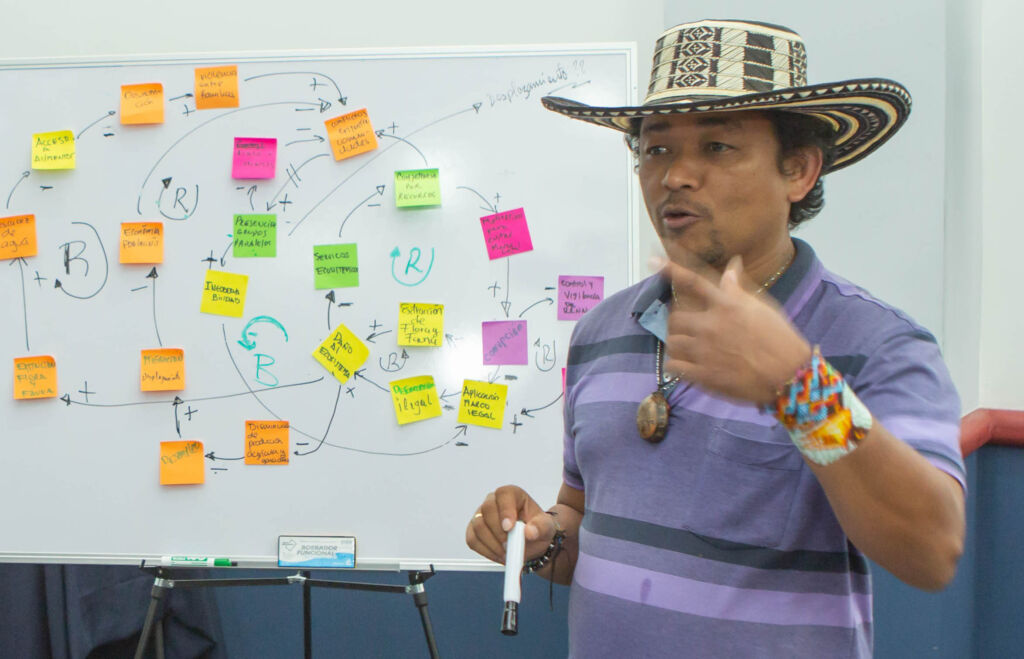Synopsis
The “Causal Loop Diagrams: Understanding Factors and Causality” course focuses on systems thinking concepts and methodologies where the factors in a system – and their inter-relationships – are a driving force in the social change we seek to sustain. A broad range of issues can be incorporated in understanding the factors influencing system-level behavior and outcomes, including motivations, perceptions, processes and capabilities.
This course gives participants an understanding of the significance of causality in holding complex development problems in place, and provides practical experience applying a specific Systems Thinking tool, Causal Loop Diagrams (CLDs), used to visualize factors and their causal relationships.
CLDs give practitioners insight into the interactions and feedback structures that make development problems difficult to resolve, and into potential high-leverage interventions to address underlying systemic constraints. They can also support the establishment of monitoring, evaluation and learning processes to measure progress and track needs for adaptation over time.
Objectives
The objectives for this course are:
- Identify the key concepts of Systems Thinking and Systems Change needed for international development
- Use a systems thinking lens to understand factors, causality and feedback
- Understand the benefits and uses of Causal Loop Diagrams for international development
- Practice how to build a Causal Loop Diagram for a development context
- Understand next steps for analyzing and using a Causal Loop Diagram for Design, Monitoring and Learning

Modality
Nothing can completely recreate the in-person training experience, but there are some advantages to distance learning and we have developed our training delivery methods to utilize the benefits, including breaking the learning into smaller, more manageable pieces; having time between sessions to learn, practice skills, and work on participants’ “day job”; more practice for participants to integrate technology platforms that are useful for developing CLDs, especially in today’s remote working environment; and work in groups to increase participation and peer-to-peer learning.
The modalities for the online training will include:
- Watch short pre-recorded videos (some lecture and some other existing materials)
- One and a half – to two-hour live sessions with instructor for some lecture, some interactive work, and Q&A with participants
- Small group work (to encourage active participation) on review of suggested reading and to complete interactive exercises as participants develop their own CLDs
- Comprehension quizzes to see what topics need further discussion
Curriculum
The curriculum covers a variety of topics oriented around understanding how factors contribute to outcomes, ultimately causing the effects (development problems) we see. The curriculum is progressive, with each session building upon the knowledge gained previously and its completion will required an approximate total of 25 hours.
Session 1 – Introduction to Systems Thinking
Brings all participants up to a shared understanding of Systems Thinking as LINC uses and applies it. It covers important systems thinking concepts, with a focus on those most central to understanding factors and creating sustainable change in complex systems
Sessions 2 – Introduction to Causal Loop Diagram
Covers CLD Theory and Practice. Participants are introduced to factors and causality, with a focus on tricks to identify cause-effect relationships.
Session 3 – CLD Process
Presents the step-by-step process for developing a CLD. Participants will work through the steps in small teams, develop complex CLDs, and present their final CLDs to the larger group for feedback and to develop their “storytelling narrative.”
Session 4 – CLDs of Key Systems Archetypes
Introduces several dynamics that are frequently observed in complex development problems. Participants will learn the stories, typical mental models and effective responses to these dynamics and will practice identifying them in real life scenarios.
Session 5 – Next Step with CLD
Introduces next steps to build on the knowledge cultivated during development of CLDs. The primary areas of focus in analyzing CLDs include an understanding of Leverage Points (places to intervene), Telling the Story of the complex problem mapped, and incorporating insights into Monitoring, Evaluation and Learning.

For more information, please contact our training team at training@linclocal.org
